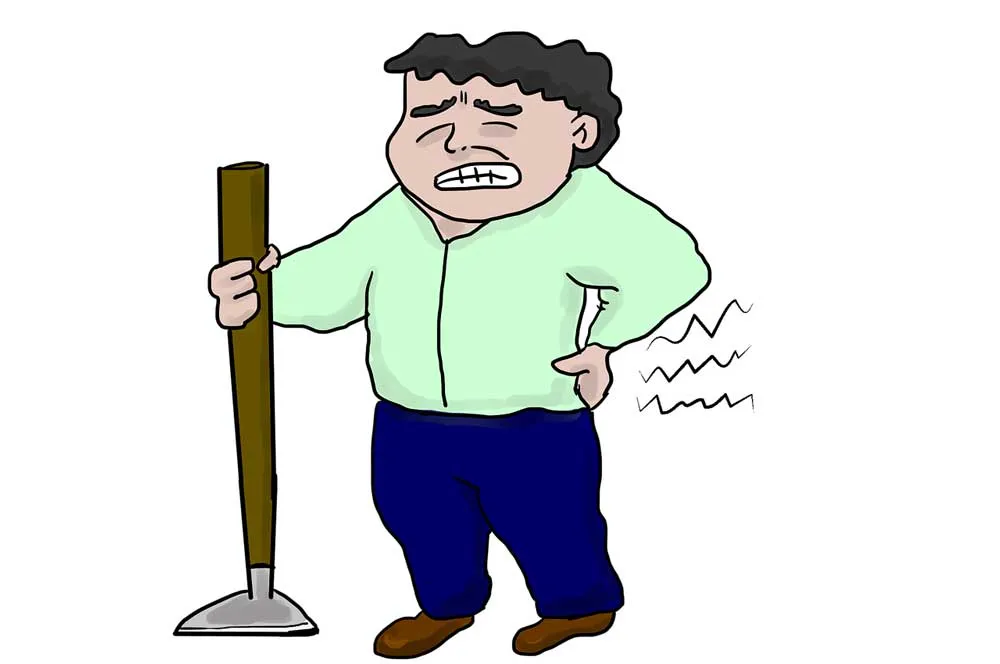Sciatica symptoms can vary from having severe pain that radiates through the legs and feed to a burning sensation or the inability to put your full weight on one leg.
According to Harvard Health, approximately 40% of people experience sciatica at some point in their life, with about 10% of the population suffering at any given time.
Though it’s common to experience sciatica, it’s not normal.
In this article, you’ll learn tips on dealing with sciatic pain and what to do next to keep it from getting worse.
What is Sciatica?
Though you might hear people say, “I have sciatica,” sciatica is not a condition. Instead, it’s a nerve pain symptom of numerous other back problems such as a herniated disc, a bone spur on a vertebra, or the narrowing of spinal cord nerve openings (called spinal stenosis).
The nerve pain you’re feeling comes from inflammation in the sciatic nerve. This nerve is the largest in the body, both in terms of length and width. It starts in the lower back area (the lumbar spine) and branches down through the legs and feet.
The size and location of the sciatic nerve can make sciatica extremely painful and uncomfortable. It can create feelings of sharpness, numbness, and tingling that go all the way from your low back down to your foot. The good news is that sciatica can be both treated and prevented.
Causes of Sciatica
There are several risk factors that can increase the likelihood of and aggravate sciatica, including:
- Age: Symptoms tend to first appear in adults between 25 and 45 years of age. An accumulation of injuries and microtraumas can trigger the first sensations of pain.
- Weight: Carrying more than what is considered a healthy weight can put increased stress and pressure on your spine.
- Occupation: Both sedentary and physical jobs can contribute to spinal conditions.
- Sitting: As the saying goes, “sitting is the new cancer.” Being sedentary for extended periods throughout the day can adversely affect your back.
- Diabetes: According to the Mayo Clinic, people with diabetes are at a higher risk for nerve damage.
How to Avoid Sciatica Pain
There are numerous ways to avoid and lessen sciatic nerve pain, ranging from lifestyle changes to treatment options, especially physical therapy.
- Maintain good posture. Slouching and sitting in improper positions can put undue strain on your back, making sciatica worse. When you’re standing, make sure you put equal weight on both legs and maintain a position where your shoulders and hips are balanced.
- Avoid sitting for long periods. If you have a desk job, make sure you take frequent breaks to get up, walk around, and stretch.
- Lose weight. If your current weight is outside of the CDC’s guidelines, consider taking steps to reduce your weight. A balanced diet that restricts calories combined with a moderate exercise routine can help you shed pounds safely while relieving sciatica pressure.
- Strengthen your core muscles. Muscle weakness, especially in the abdominal muscles, can trigger back pain because the lack of strength in your abdominal area can affect your posture. Strengthening your stomach muscles can help with your posture, and therefore, your back pain symptoms.
- Adjust your sleep position. We spend many hours sleeping each day, and being in the wrong position here can wreak havoc on your spine. The best sleeping positions are:
- On your side with a pillow between your knees and ankles.
- On your back with a pillow under your knees.
Also, while on the topic of sleep, consider getting a new mattress if yours is old and not giving you the proper support.
Effective Treatment for Sciatica Pain Relief
A physical therapist (PT) is crucial to helping you live pain-free from sciatica. They can recommend a treatment regime that will address the true cause of your sciatica and give you the tools you need to get back to pain-free living. Working with a professional can ensure that you take safe and healthy steps to treat sciatica and ease pain.
If you’re in pain and ready to get your life back, contact Impact Physio at 570-319-6903 to schedule a complimentary consultation.



